- Home
- Startups at Microsoft
- Startups at Microsoft
- How To Set Up and Configure a GPT Deployment Using the Azure OpenAI Service
- Subscribe to RSS Feed
- Mark as New
- Mark as Read
- Bookmark
- Subscribe
- Printer Friendly Page
- Report Inappropriate Content
1. Navigate to https://portal.azure.com
2. Log in to / select your account, if necessary.
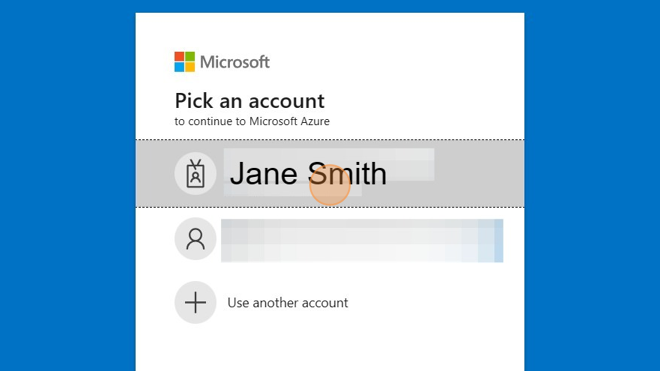
3. Click "Create a resource" on the Azure dashboard.

4. Click the "Search services and marketplace" search box.
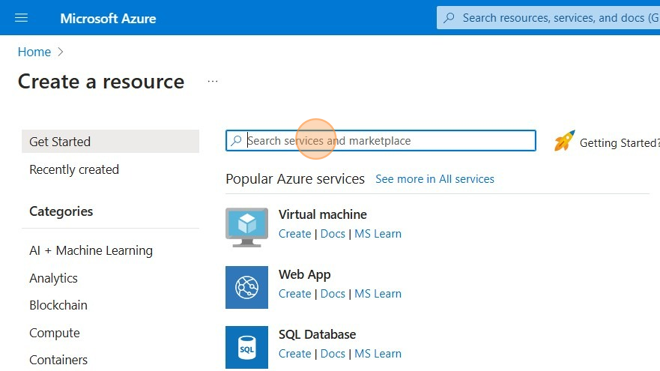
5. Type "openai"
6. Select "openai"
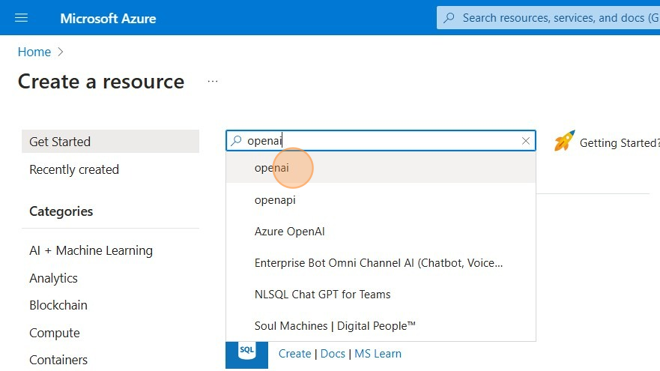
7. Click "Create" in the Azure OpenAI service tile.
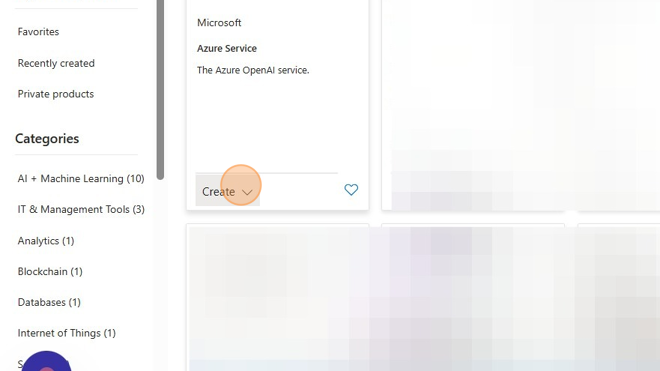
8. Click "Azure OpenAI."

9. Select a subscription, and select an existing Resource Group, or click "Create new" to create a new resource group.
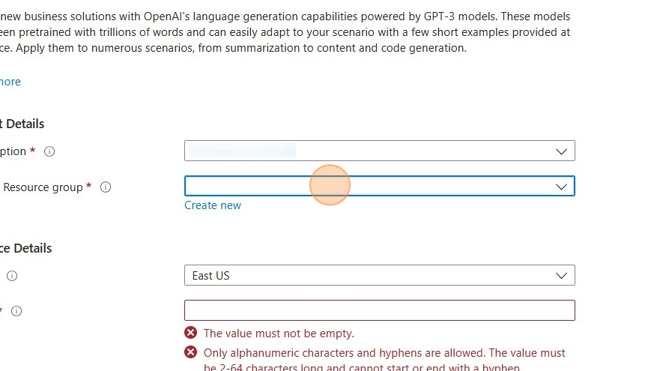
10. Enter a name for your Azure OpenAI instance per the instructions shown.

11. Select an appropriate pricing tier. You can view full pricing details via the link under the selection.
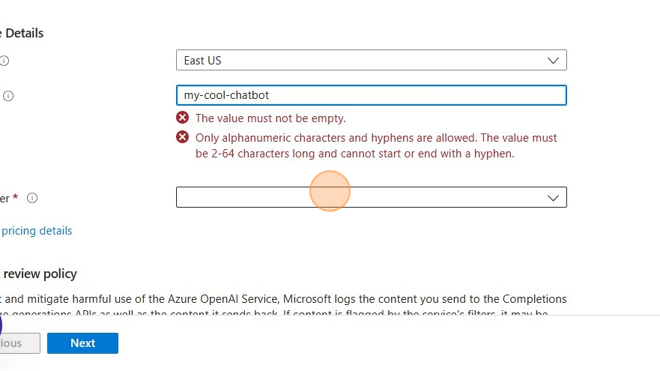
12. Review the content review policy and other information, then click the "Next" button to move through the "Network" and "Tags" tabs. The default values are usually OK for most basic configurations.
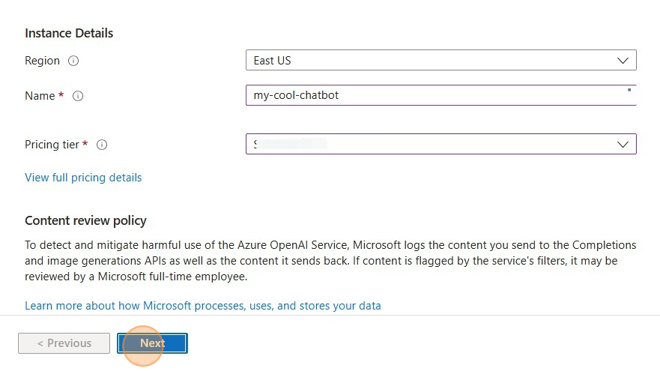
13. Review the terms and configuration and click the "Create" button.
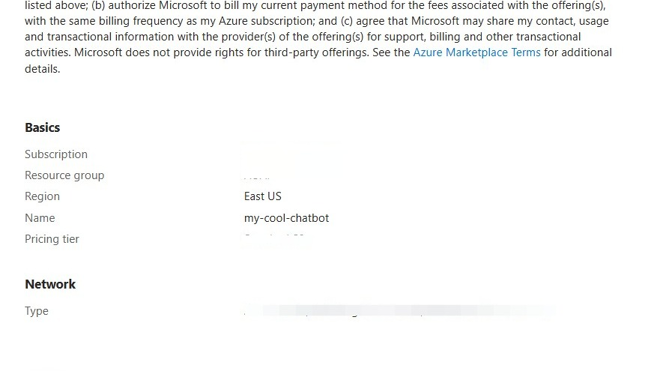
14. The deployment will take a little while to complete. If it is successful, the "Go to resource" button will appear. Click the button.
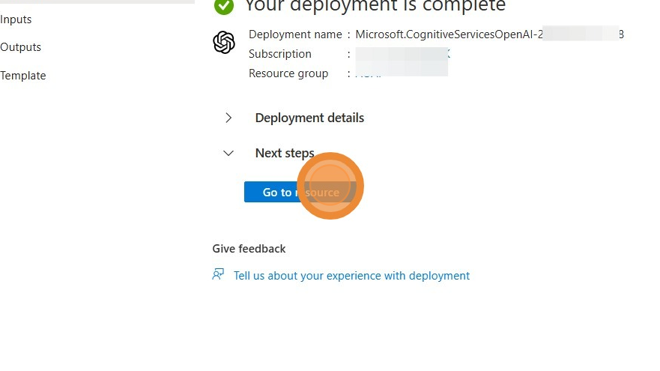
15. From the Azure OpenAI Service resource view, click "Model deployments" under the "Resource Management" group.
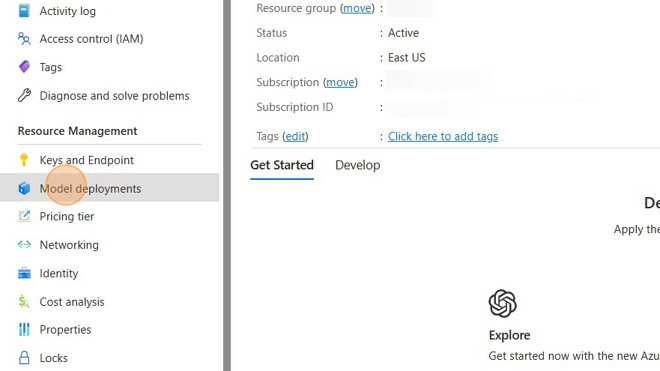
16. Click the "Manage Deployments" button.
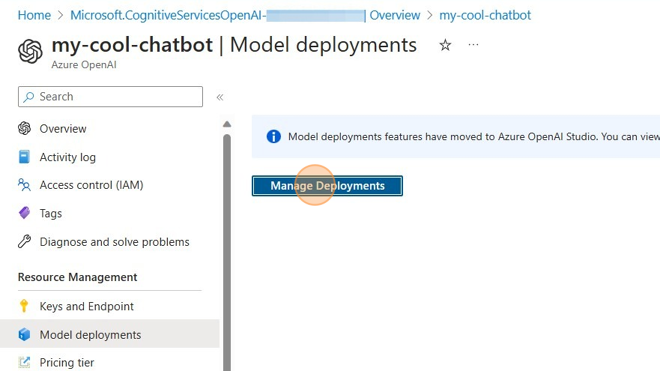
17. You will be redirected to Azure OpenAI Studio. When you get there, you may be prompted to select the Azure Active Directory and Subscription that your resource was created in. If so, set them appropriately. You will then be able to select the resource that you created in the previous steps.
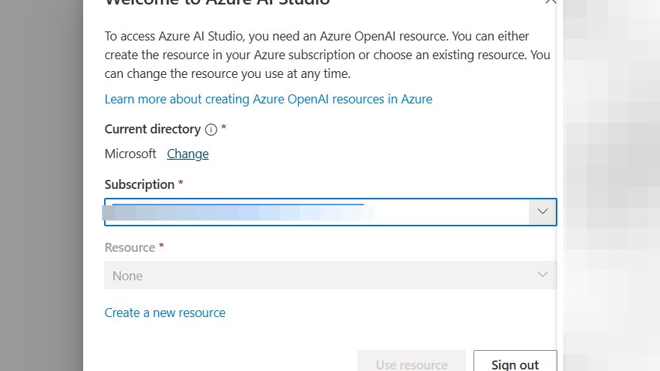
18. Select the resource created in the previous steps.

19. Click "Use resource"

20. Click "Deployments" from the "Management" section.
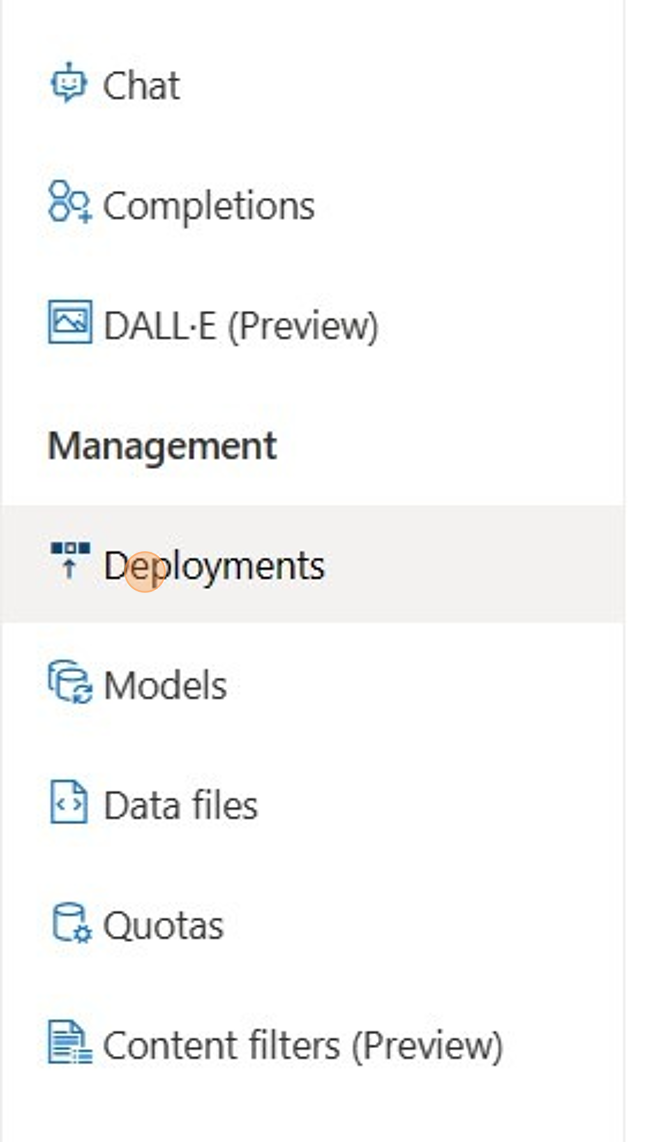
21. Click "Create new deployment"

22. Click the "Select a model" field.

23. Select the model to use. For our chatbot, we will choose the "gpt-35-turbo" model. Other models may be available to you.

24. Give the deployment a name, then click the "Create" button.
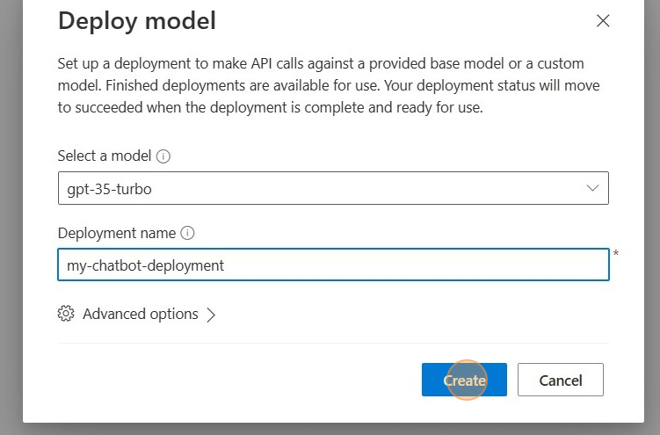
25. Your configuration is complete!
You must be a registered user to add a comment. If you've already registered, sign in. Otherwise, register and sign in.